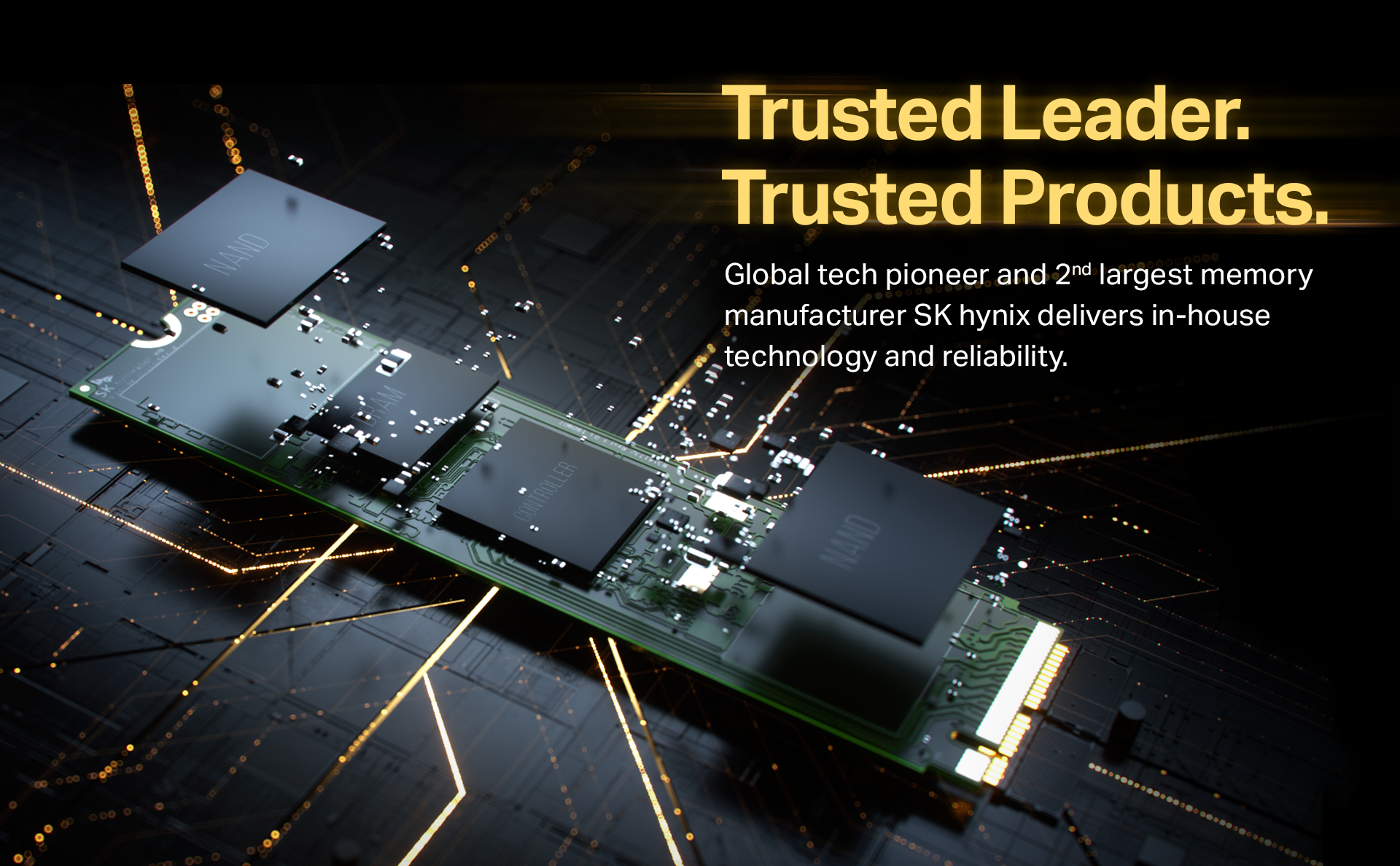SK hynix Scores A World First: Unleashes a Consumer SSD With 128-Layer NAND
Competitively priced and with performance to match
Over the last few years, all of the major NAND makers have been in a race to build NAND memory with incredibly high layer counts, and now, these efforts are paying off for SK hynix. Today, the South Korean memory manufacturer is unleashing its Gold P31 SSDs onto the open consumer market, making SK hynix the first to sell an SSD with 128-layer NAND.
The Gold P31 SSDs come in the form of M.2 NVMe drives operating over the PCIe 3.0 interface, packing capacities of either 500 GB or 1 TB.
Both of the drives feature read speeds of up to 3500 MB/s and writes of up to 3200 MB/s, which is in-line with the best PCIe 3.0 based NVMe drives, saturating the PCI-Express bandwidth.





SK hynix says that the quality of the drives should be equal to that of the Samsung 970 Evo, albeit with better value.
Stacking the memory dies many layers on top of each other like this enables the NAND makers to cram more data into the same dies, which in the end uses less silicon per GB and reduces production costs, which are benefits that translate on to consumers. Tally that with today's low NAND prices, and SK hynix has some seriously sharp pricing on these units. Meanwhile, Samsung is working on 160-layer NAND, Intel on 144 layers, and YMTC on 128-layer 3D NAND, but none of them have brought a product to market yet.
The 1 TB SK hynix Gold P31 costs $135 on Amazon, with the 500 GB variant costing $75.
Get Tom's Hardware's best news and in-depth reviews, straight to your inbox.
Niels Broekhuijsen is a Contributing Writer for Tom's Hardware US. He reviews cases, water cooling and pc builds.
-
dbob3 "saturating the PCI-Express bandwidth"Reply
Can the sentence be changed to "saturating the PCI-Express bandwidth for non-AMD machines"? Yes...it mentioned ancient Gen3 several times in the paragraph...but until it gets enough attention, Intel will continue to not compete here. Reminds me how PCs and Windows-based laptops are stuck using 1080P monitors/screens for the past 20 (?) years while macs are mostly standard with 4K displays. Why? Because it doesn't get enough attention! -
alextheblue Reply
Intel is trying to compete, they're already implementing 4.0 as fast as they can. Their first attempt turned out to be flawed, and they had to disable it. The point I'm trying to make is that bringing attention to it won't actually speed things up, they literally can't implement it any quicker. They stumbled, it wasn't intentional.dbob3 said:"saturating the PCI-Express bandwidth"
Can the sentence be changed to "saturating the PCI-Express bandwidth for non-AMD machines"? Yes...it mentioned ancient Gen3 several times in the paragraph...but until it gets enough attention, Intel will continue to not compete here. Reminds me how PCs and Windows-based laptops are stuck using 1080P monitors/screens for the past 20 (?) years while macs are mostly standard with 4K displays. Why? Because it doesn't get enough attention!
Also, the sentence is fine as-is. It does saturate the available 3.0 bandwidth, it consumes all four lanes, and it will NOT run any faster on an AMD machine. If you want to fuss at someone, SK Hynix is the responsible party. -
alextheblue Niels, IOPS:Reply
https://m.media-amazon.com/images/I/81jH3WJyQSL.pdf
On paper it looks faster than comparably-priced drives. Could turn out to be a great budget drive, may very well displace drives like the SN750 and the SX8200 Pro.
